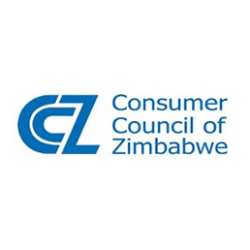
CONSUMER Council of Zimbabwe (CCZ) says there is need to amplify the monitoring of the pricing model in the country amid the widening gap between the official and informal exchange rates.
In its submissions ahead of the mid-term monetary policy review, CCZ chief executive officer Rosemary Mpofu said the gap could illustrate the lack of confidence in the currency, Zimbabwe Gold (ZiG).
“There is a widening gap between the official exchange rate and the rates being applied in various supermarkets. The informal market rates now range from US$ 1:14,7–23,” Mpofu said.
“This could be a signal for deficiency of confidence in the market mostly by traders or unwarranted panic by some individuals which may destabilise the currency and push inflation.”
She said there was a knowledge gap that needed to be addressed on the new currency, especially in areas beyond Harare, where consumers are still sceptical due to previous experiences with changing currencies.
“The market needs continuous monitoring and there is a need to give the consumer as much information as is necessary to empower them. Knowledge gap about the new currency is still obtaining in the market, particularly in remote areas of the country. This can be witnessed by the lack of confidence of the ZiG when transacting in those remote areas and even in most informal markets,” Mpofu said.
She said the central bank needed to make the Vehicle Inspectorate Department (VID) and the passport offices to accept the local currency to boost confidence in the use of the local currency.
“The charging of specific products and services in US dollars is undermining the confidence in the local currency, especially when it is being experienced in some government departments such as the VID and at passport offices that issue indispensable documents,” she said.
- Mthuli Ncube abandons struggling consumers
- Government moves to cushion pensioners
- Village Rhapsody: Zanu PF must commit to peaceful transition in 2023
- Could genomics bring answers to the Siyachitema Covid-19 bloodbath?
Keep Reading
“The central bank together with the government is expected to address the above-mentioned issue by making it mandatory for all government departments, including the passport offices, VID, and ZIMRA [Zimbabwe Revenue Authority] customs and excise duty department to accept the payment of their products or services in any currency in the basket, including the ZiG.”
Mpofu also noted that the charges on transactions and withdrawals were too high, which works against plans to promote a savings culture.
She suggested that the central bank should incentivise deposits as consumers are not realising the interest on their savings, but rather that bank charges are chewing off a huge chunk of their money, resulting in a negative savings rate.
“The current bank charges are too high and way above those obtaining in the region. This is reducing the incomes of the consumers, who are earning below the poverty datum line,” Mpofu said.
“The high bank charges are also exerting unnecessary pressure on the demand for cash, especially once one receives money from their accounts, which otherwise could be saved. In addition, high bank charges discourage people from banking and promote informalisation.
Mpofu said the exchange rate disparities between the cash and the coins erodes consumers’ incomes, especially those who would have been paid their salaries at the official rate.
“It has also been observed that there continues to be exchange rate disparities within the cash notes and coins. Consumers are often short-changed when they pay using ZiG notes because ZiG10 is equated to US$0,50 and the same applies to ZiG20, which is equated to only US$1,” she said.
“Such conditions in the market are significantly eroding the consumers’ incomes, especially those who would have been paid their salaries at the official rate of around 13,79.”










